The CSIRO In-Situ Laboratory in South Western Australia: a field laboratory for de-risking carbon storage
Karsten Michael A C , Ludovic Ricard A , Linda Stalker A , Allison Hortle A and Arsham Avijegon BA CSIRO Energy, 26 Dick Perry Avenue, Kensington, WA 6151, Australia.
B GASS Petroleum Consulting Pty Ltd, Mount Pleasant, WA 6153, Australia.
C Corresponding author. Email: karsten.michael@csiro.au
The APPEA Journal 60(2) 732-735 https://doi.org/10.1071/AJ19111
Accepted: 5 March 2020 Published: 15 May 2020
Abstract
The oil and gas industry in Western Australia will need to address their carbon emissions in response to the state government’s aspiration of net zero greenhouse gas emissions by 2050. The geological storage of carbon dioxide is a proven technology and an option for reducing emissions. Storage operations would need to provide adequate monitoring systems in compliance with yet to be defined regulations and to assure the public that potential leakage could be confidently detected, managed and remediated. The In-Situ Laboratory in the south-west of Western Australia was established as a research field site to support low emissions technology development and provides a unique field site for controlled CO2 release experiments in a fault zone and testing of monitoring technologies between 400 m depth and the ground surface. A first test injection of 38 tonnes of food-grade gaseous CO2 in 2019 demonstrated the ability to detect less than 10 tonnes of CO2 with fibre optic sensing and borehole seismic testing. Results from the previous test and future experiments will help to improve the sensitivity of monitoring technologies and could contribute to defining adequate monitoring requirements for carbon storage regulations.
Keywords: carbon storage regulations, CO2 monitoring, controlled CO2 release experiment, fibre optic sensing.
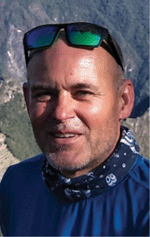
Karsten Michael has MSc and PhD degrees in Hydrogeology from the Technical University Berlin and from the University of Alberta, respectively. After finishing university, he worked as a hydrogeologist at the Alberta Geological Survey/Alberta Energy and Utilities Board in Canada on the characterisation of acid-gas injection operations before joining CSIRO in Perth in 2007. He currently is the acting research group leader for Reservoir Dynamics in the CSIRO Energy business unit. Karsten is also project leader of the CSIRO In-Situ Laboratory project that involved re-completing one of the wells at the South West Hub CCS Flagship project in Western Australia for monitoring and testing purposes. In the past, Karsten was a project leader for Understanding CO2 storage in Saline Aquifers in the CO2CRC. |
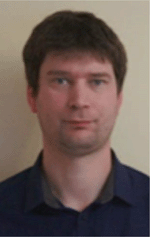
Ludovic Ricard is a reservoir engineer at CSIRO Energy. He holds a MSc from the University of Bordeaux I and a PhD in Earth Sciences from the University of Paris XI. He joined CSIRO Energy as reservoir engineer for geothermal energy projects, later moving to carbon geosequestration and unconventional reservoirs. Currently he is the CSIRO lead of distributed temperature sensing and managing operations at the CSIRO In-Situ Laboratory research site. He is a member of SPE, SPWLA, FESAus and EAGE. |
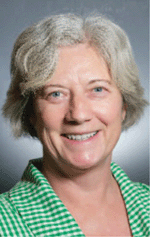
Linda Stalker obtained a BSc (Hons) in Applied Geology (University of Strathclyde, Scotland) in 1990. Her PhD on petroleum geochemistry and CO2 generation, was gained at the University of Newcastle-upon-Tyne. In 1994 she joined the University of Oklahoma (USA) on a Department of Energy sponsored post-doctoral study into organosulfur compounds trapped in coals. From 1996 she worked in petroleum E&P at Statoil, in Norway. She joined CSIRO in 2000 as leader in gas geochemistry specialising in analysis and interpretation of carbon and hydrogen isotopes of oil and gas. She transitioned back to CO2 related research through activities with the CO2CRC (The Cooperative Research Centre for Greenhouse Gas Technologies) conducting research in the geological storage of CO2 and in the area of monitoring and verification (tracers). Since 2010, Linda’s roles have included Science Director for the National Geosequestration Laboratory (NGL), Group Leader roles and currently the Acting CEO of the Western Australia Energy Research Alliance (WA:ERA). She still finds time to do actual science! |
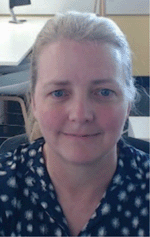
Allison Hortle is a Senior Researcher with CSIRO Energy since 1993 and is currently acting as Research Program Director in Oil, Gas and Fuels. Allison’s most recent research addresses the need to couple large-scale deep reservoir processes (such as CO2 injection and unconventional gas production) to near surface techniques for determining environmental baselines and long-term monitoring and verification practises. |
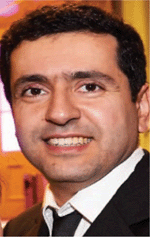
Arsham Avijegon is currently a Production Technologist at Shell. He holds a master’s degree in Petroleum Engineering from Curtin University, Perth. Arsham started his career with Schlumberger in 1996 as a wireline logging engineer and gained experience in offshore and onshore, oil and gas well services aspects such as formation evaluation, workovers, perforations, conveyance methods and well integrity. He joined Chevron as Reservoir Engineer working on Greater Gorgon fields and later branched out to Production Engineer focusing on commissioning and start-up of High Rate subsea gas wells. Prior to joining Shell, Arsham was the Project and Operations Manager for the CSIRO In-Situ Laboratory Project. He is a member of SPE. |
References
Michael, K., Avijegon, A., Ricard, L., Strand, J., Freifeld, B., Woitt, M., Pervukhina, M., Tertyshnikov, K., Pevzner, R., Rachakonda, P., Larcher, A., Dance, T., Myers, M., Delle Piane, C., Feitz, A., Stalker, L., Myers, J., Langhi, L., Hortle, A., and Geeves, D. (2019). The South West Hub In-Situ Laboratory – a facility for CO2 injection testing and monitoring in a fault zone. In ‘14th Greenhouse Gas Control Technologies Conference (GHGT-14), Melbourne, Vic., Australia, 21–26 October 2018’. (SSRN: Rochester, NY, USA.) Available at https://ssrn.com/abstract=3366045[verified 23 March 2020].Roberts, J. J., and Stalker, L. (2017). What have we learned about CO2 leakage from field injection tests? Energy Procedia 114, 5711–5731.
| What have we learned about CO2 leakage from field injection tests?Crossref | GoogleScholarGoogle Scholar |
Sharma, S., and Van Gent, D. (2018). The Australian South West Hub Project: developing confidence in migration assisted trapping in a saline aquifer – understanding uncertainty boundaries through scenarios that stress the models. In ‘14th Greenhouse Gas Control Technologies Conference (GHGT-14), Melbourne, Vic., Australia, 21–26 October 2018’. (SSRN: Rochester, NY, USA.) Available at https://ssrn.com/abstract=3366170 [verified 23 March 2020].
Sharma, S., Van Gent, D., Burke, M., and Stelfox, L. (2017). The Australian South West Hub Project: developing a storage project in unconventional geology. Energy Procedia 114, 4524–4536.
| The Australian South West Hub Project: developing a storage project in unconventional geology.Crossref | GoogleScholarGoogle Scholar |


